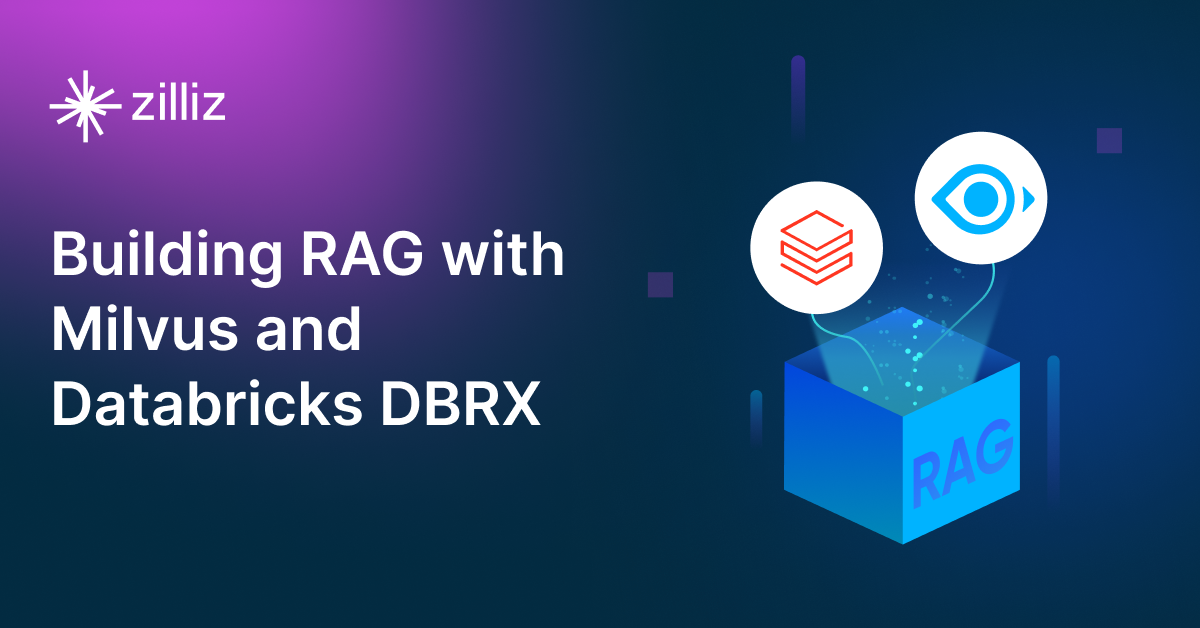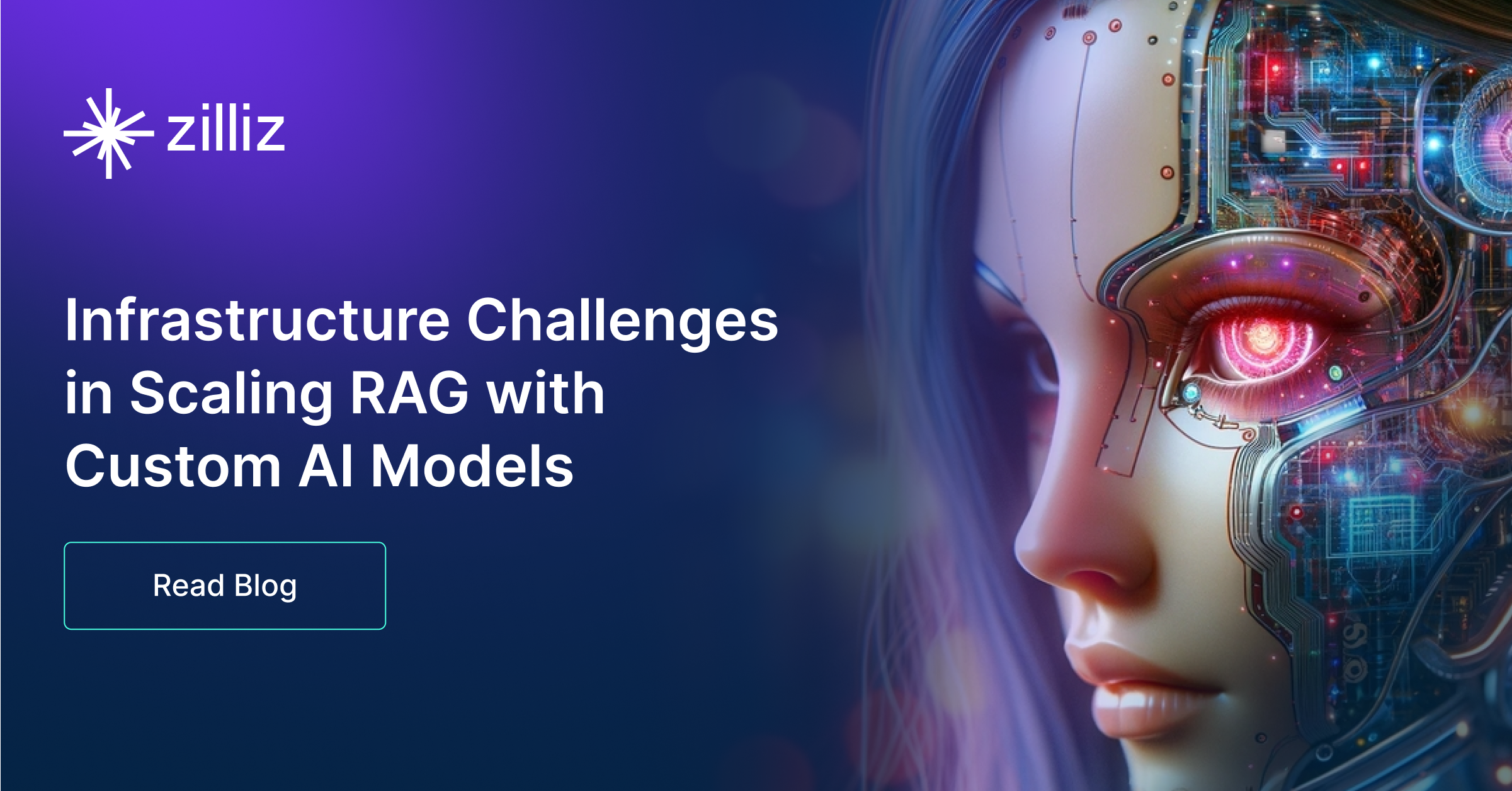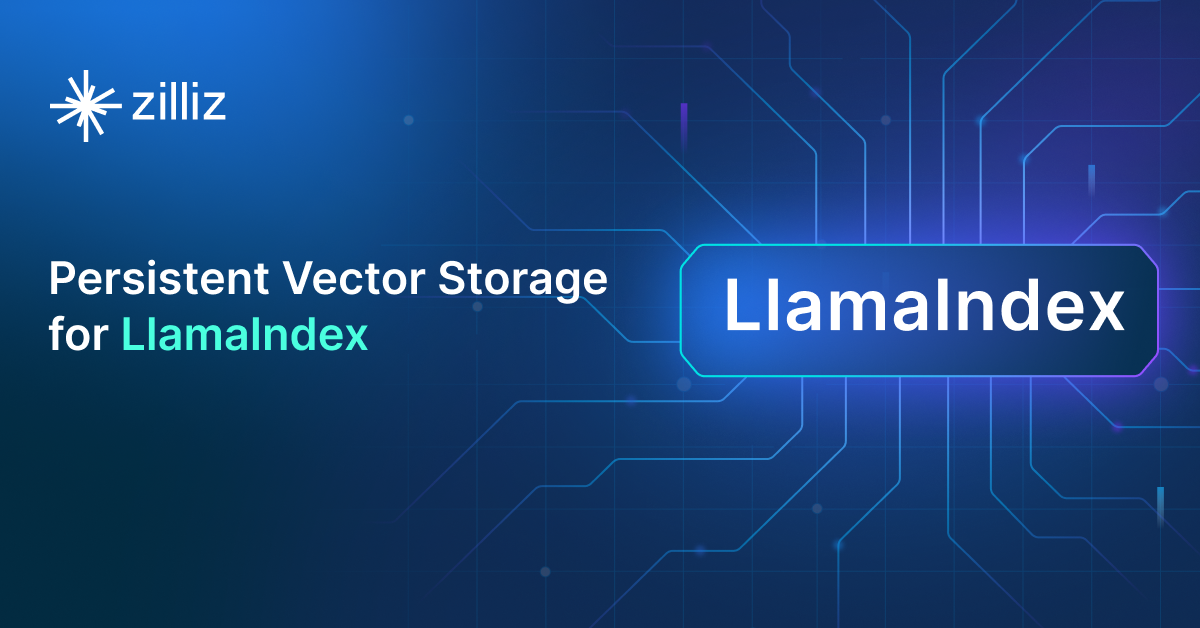Build RAG Chatbot with LangChain, OpenSearch, AWS Bedrock Claude 3 Haiku, and Google Vertex AI textembedding-gecko@001
Introduction to RAG
Retrieval-Augmented Generation (RAG) is a game-changer for GenAI applications, especially in conversational AI. It combines the power of pre-trained large language models (LLMs) like OpenAI’s GPT with external knowledge sources stored in vector databases such as Milvus and Zilliz Cloud, allowing for more accurate, contextually relevant, and up-to-date response generation. A RAG pipeline usually consists of four basic components: a vector database, an embedding model, an LLM, and a framework.
Key Components We'll Use for This RAG Chatbot
This tutorial shows you how to build a simple RAG chatbot in Python using the following components:
- LangChain: An open-source framework that helps you orchestrate the interaction between LLMs, vector stores, embedding models, etc, making it easier to integrate a RAG pipeline.
- OpenSearch: An open-source search and analytics suite derived from Elasticsearch. It offers robust full-text search and real-time analytics, with vector search available as an add-on for similarity-based queries, extending its capabilities to handle high-dimensional data. Since it is just a vector search add-on rather than a purpose-built vector database, it lacks scalability and availability and many other advanced features required by enterprise-level applications. Therefore, if you prefer a much more scalable solution or hate to manage your own infrastructure, we recommend using Zilliz Cloud, which is a fully managed vector database service built on the open-source Milvus and offers a free tier supporting up to 1 million vectors.)
- AWS Bedrock Claude 3 Haiku: This model harnesses the power of Claude 3 within AWS's Bedrock service, facilitating scalable AI solutions. It excels in natural language understanding and generation tasks, making it ideal for customer support, content creation, and conversational agents. Its integration with cloud infrastructure ensures flexibility and ease of deployment for enterprises.
- Google Vertex AI textembedding-gecko@001: This AI model specializes in generating high-quality text embeddings, facilitating superior semantic understanding and context capturing. Its strengths lie in efficient processing and scalability, making it ideal for applications like search, recommendation systems, and natural language understanding tasks that demand precise insights from textual data.
By the end of this tutorial, you’ll have a functional chatbot capable of answering questions based on a custom knowledge base.
Note: Since we may use proprietary models in our tutorials, make sure you have the required API key beforehand.
Step 1: Install and Set Up LangChain
%pip install --quiet --upgrade langchain-text-splitters langchain-community langgraph
Step 2: Install and Set Up AWS Bedrock Claude 3 Haiku
pip install -qU "langchain[aws]"
# Ensure your AWS credentials are configured
from langchain.chat_models import init_chat_model
llm = init_chat_model("anthropic.claude-3-haiku-20240307-v1:0", model_provider="bedrock_converse")
Step 3: Install and Set Up Google Vertex AI textembedding-gecko@001
pip install -qU langchain-google-vertexai
from langchain_google_vertexai import VertexAIEmbeddings
embeddings = VertexAIEmbeddings(model="textembedding-gecko@001")
Step 4: Install and Set Up OpenSearch
pip install --upgrade --quiet opensearch-py langchain-community
from langchain_community.vectorstores import OpenSearchVectorSearch
opensearch_vector_search = OpenSearchVectorSearch(
"http://localhost:9200",
"embeddings",
embedding_function
)
Step 5: Build a RAG Chatbot
Now that you’ve set up all components, let’s start to build a simple chatbot. We’ll use the Milvus introduction doc as a private knowledge base. You can replace it with your own dataset to customize your RAG chatbot.
import bs4
from langchain import hub
from langchain_community.document_loaders import WebBaseLoader
from langchain_core.documents import Document
from langchain_text_splitters import RecursiveCharacterTextSplitter
from langgraph.graph import START, StateGraph
from typing_extensions import List, TypedDict
# Load and chunk contents of the blog
loader = WebBaseLoader(
web_paths=("https://milvus.io/docs/overview.md",),
bs_kwargs=dict(
parse_only=bs4.SoupStrainer(
class_=("doc-style doc-post-content")
)
),
)
docs = loader.load()
text_splitter = RecursiveCharacterTextSplitter(chunk_size=1000, chunk_overlap=200)
all_splits = text_splitter.split_documents(docs)
# Index chunks
_ = vector_store.add_documents(documents=all_splits)
# Define prompt for question-answering
prompt = hub.pull("rlm/rag-prompt")
# Define state for application
class State(TypedDict):
question: str
context: List[Document]
answer: str
# Define application steps
def retrieve(state: State):
retrieved_docs = vector_store.similarity_search(state["question"])
return {"context": retrieved_docs}
def generate(state: State):
docs_content = "\n\n".join(doc.page_content for doc in state["context"])
messages = prompt.invoke({"question": state["question"], "context": docs_content})
response = llm.invoke(messages)
return {"answer": response.content}
# Compile application and test
graph_builder = StateGraph(State).add_sequence([retrieve, generate])
graph_builder.add_edge(START, "retrieve")
graph = graph_builder.compile()
Test the Chatbot
Yeah! You've built your own chatbot. Let's ask the chatbot a question.
response = graph.invoke({"question": "What data types does Milvus support?"})
print(response["answer"])
Example Output
Milvus supports various data types including sparse vectors, binary vectors, JSON, and arrays. Additionally, it handles common numerical and character types, making it versatile for different data modeling needs. This allows users to manage unstructured or multi-modal data efficiently.
Optimization Tips
As you build your RAG system, optimization is key to ensuring peak performance and efficiency. While setting up the components is an essential first step, fine-tuning each one will help you create a solution that works even better and scales seamlessly. In this section, we’ll share some practical tips for optimizing all these components, giving you the edge to build smarter, faster, and more responsive RAG applications.
LangChain optimization tips
To optimize LangChain, focus on minimizing redundant operations in your workflow by structuring your chains and agents efficiently. Use caching to avoid repeated computations, speeding up your system, and experiment with modular design to ensure that components like models or databases can be easily swapped out. This will provide both flexibility and efficiency, allowing you to quickly scale your system without unnecessary delays or complications.
OpenSearch optimization tips
To optimize OpenSearch in a Retrieval-Augmented Generation (RAG) setup, fine-tune indexing by enabling efficient mappings and reducing unnecessary stored fields. Use HNSW for vector search to speed up similarity queries while balancing recall and latency with appropriate ef_search and ef_construction values. Leverage shard and replica settings to distribute load effectively, and enable caching for frequent queries. Optimize text-based retrieval with BM25 tuning and custom analyzers for better relevance. Regularly monitor cluster health, index size, and query performance using OpenSearch Dashboards and adjust configurations accordingly.
AWS Bedrock Claude 3 Haiku optimization tips
Claude 3 Haiku on AWS Bedrock is designed for speed and efficiency, making it ideal for real-time RAG applications. Optimize retrieval by prioritizing high-precision embeddings and filtering out low-relevance documents before passing them to the model. Keep prompts structured with clear formatting to help the model focus on the most critical context. Use temperature settings between 0.1 and 0.3 for factual accuracy and adjust top-p to balance diversity. For latency-sensitive applications, leverage AWS Bedrock’s scaling capabilities to ensure smooth performance under heavy loads. Implement caching for frequently accessed queries to reduce API calls and improve response times. If used in a multi-model setup, reserve Haiku for fast preliminary filtering or summarization before escalating complex queries to larger models.
Google Vertex AI textembedding-gecko@001 optimization tips
Google Vertex AI textembedding-gecko@001 provides strong semantic understanding suitable for a variety of RAG workflows. To optimize retrieval, preprocess text to remove non-essential words and structure content to highlight key information. Use nearest neighbor search with techniques like HNSW or FAISS to enhance retrieval speed without sacrificing accuracy. Optimize batch processing by grouping multiple text queries together, reducing API call overhead and increasing throughput. Fine-tune temperature settings to ensure consistent responses, and adjust top-k or top-p parameters based on the desired level of output diversity. Cache embeddings for frequently used text and set up periodic updates to ensure embedding freshness. Use dimensionality reduction to manage memory usage and storage costs effectively.
By implementing these tips across your components, you'll be able to enhance the performance and functionality of your RAG system, ensuring it’s optimized for both speed and accuracy. Keep testing, iterating, and refining your setup to stay ahead in the ever-evolving world of AI development.
RAG Cost Calculator: A Free Tool to Calculate Your Cost in Seconds
Estimating the cost of a Retrieval-Augmented Generation (RAG) pipeline involves analyzing expenses across vector storage, compute resources, and API usage. Key cost drivers include vector database queries, embedding generation, and LLM inference.
RAG Cost Calculator is a free tool that quickly estimates the cost of building a RAG pipeline, including chunking, embedding, vector storage/search, and LLM generation. It also helps you identify cost-saving opportunities and achieve up to 10x cost reduction on vector databases with the serverless option.
 Calculate your RAG cost
Calculate your RAG cost
What Have You Learned?
By diving into this tutorial, you’ve discovered how to weave together cutting-edge tools to create a powerful RAG system that breathes life into your applications! You learned how LangChain acts as the glue, orchestrating workflows and connecting your pipeline’s components seamlessly. OpenSearch steps in as your robust vector database, storing and retrieving embeddings with lightning speed while handling hybrid search scenarios—like filtering by metadata or blending keyword and semantic search for precision. AWS Bedrock’s Claude 3 Haiku shines as your LLM powerhouse, balancing speed, cost-efficiency, and high-quality text generation, making it perfect for real-time responses. Meanwhile, Google’s textembedding-gecko@001 transforms your raw data into rich, meaningful vectors, ensuring your system understands context and nuance. Together, these tools form a dynamic RAG pipeline that fetches accurate information and crafts natural, human-like answers. Plus, you picked up pro tips for optimization, like tweaking chunking strategies, balancing latency with accuracy, and using metadata to supercharge retrieval—all while keeping costs in check with the included free RAG cost calculator.
Now that you’ve seen how these pieces fit together, the real magic begins! You’re equipped to build smarter applications that leverage vast knowledge bases, adapt to user needs, and deliver insights on demand. Whether you’re enhancing customer support, powering research tools, or creating personalized experiences, your RAG system is a launchpad for innovation. So go ahead—experiment with different models, fine-tune your pipeline, and explore creative use cases. The tools are in your hands, the possibilities are endless, and the future of intelligent applications is yours to shape. Start building, iterate fearlessly, and watch your ideas transform into something extraordinary. Let’s make the next breakthrough happen—you’ve got this! 🚀
Further Resources
🌟 In addition to this RAG tutorial, unleash your full potential with these incredible resources to level up your RAG skills.
- How to Build a Multimodal RAG | Documentation
- How to Enhance the Performance of Your RAG Pipeline
- Graph RAG with Milvus | Documentation
- How to Evaluate RAG Applications - Zilliz Learn
- Generative AI Resource Hub | Zilliz
We'd Love to Hear What You Think!
We’d love to hear your thoughts! 🌟 Leave your questions or comments below or join our vibrant Milvus Discord community to share your experiences, ask questions, or connect with thousands of AI enthusiasts. Your journey matters to us!
If you like this tutorial, show your support by giving our Milvus GitHub repo a star ⭐—it means the world to us and inspires us to keep creating! 💖
- Introduction to RAG
- Key Components We'll Use for This RAG Chatbot
- Step 1: Install and Set Up LangChain
- Step 2: Install and Set Up AWS Bedrock Claude 3 Haiku
- Step 3: Install and Set Up Google Vertex AI textembedding-gecko@001
- Step 4: Install and Set Up OpenSearch
- Step 5: Build a RAG Chatbot
- Optimization Tips
- RAG Cost Calculator: A Free Tool to Calculate Your Cost in Seconds
- What Have You Learned?
- Further Resources
- We'd Love to Hear What You Think!
Content
Vector Database at Scale
Zilliz Cloud is a fully-managed vector database built for scale, perfect for your RAG apps.
Try Zilliz Cloud for Free


